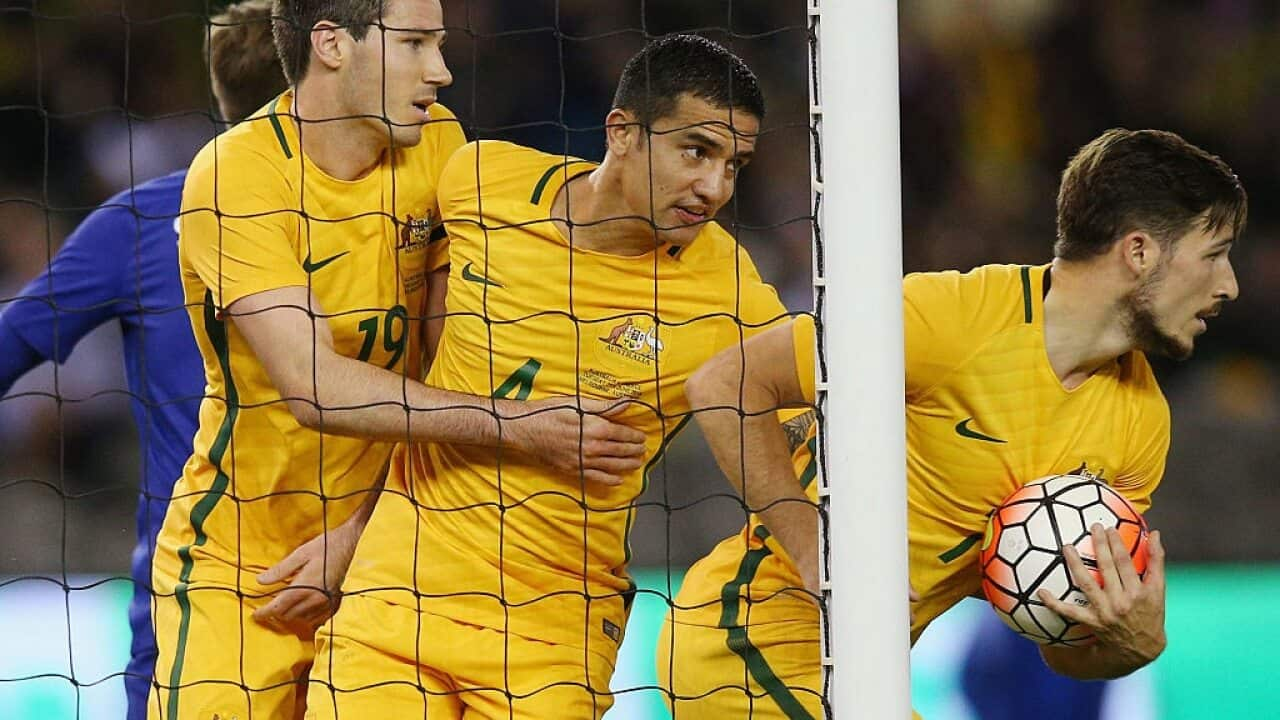You and I should be equally concerned and are entitled to ask, without Tim, who will score the goals?
In their last three games, all against European opposition, Australia scored three goals (one of which was an own goal). In the first two of those games, against England and the first game against Greece, they were so dominant in possession and created so many chances, they could have scored three or four.
Significantly, Cahill didn’t start in two of those games. We could suppose that had he played a substantial role in both of those games, it would have been a different story.
Cahill is by a long way the Socceroos’ highest ever goalscorer with 47 goals, 18 more than the second-placed Damian Mori. But Australia has long had a share of efficient strikers, Atti Abonyi, Ray Baartz, John Kosmina, Graham Arnold, Harry Kewell, John Aloisi and, at a less elite level, Mori, Archie Thompson and David Zdrilic.
But in the current era Cahill is pretty much alone as a reliable, regular scorer. In the most recent Socceroos squad, Cahill’s five attacking colleagues were Jamie Maclaren, Robbie Kruse, Nathan Burns, Apostolos Giannou and Matthew Leckie. Only one, Leckie, managed to get on the scoresheet in three games.
Those five men have collectively managed just 10 goals in 101 appearances. You might agree that’s a distressing statistic.
Coach Ange Postecoglou wants a playing system in which the scoring pool is as wide as possible and where every player is capable of scoring. This is a perfectly valid strategy if you want a team of many dimensions and technical versatility.
But if you are dominating the game and creating chances, there is no excuse for not scoring goals and, for this, the nominated strikers must shoulder most of the blame.
Is Australia producing strikers of quality? Yes but not enough of them. This in a large measure is due to the fact that foreign imports to the A-League tend to be forwards, people like Berisha, Keogh, Pablo Sanchez, Fornaroli, Novillo, Nordstrand and Henrique, holding back the promotion of budding, Australian attackers.
The most worrying aspect of the current status is Cahill’s age. He is now 36, due to turn 37 this year and is already sparingly being used as a 90-minute player.
When Postecoglou became Australia coach in 2013 he proceeded to swiftly revitalise the team, bringing the curtain down on the 2006 ‘golden generation’. Except for Cahill. Why? Because he knew he still needed Cahill and indeed there was no ready-made replacement for him in the new generation.
For example 26 year-old Giannou, only recently recruited, is part of the process to find a new, young, prolific marksman. He is yet to truly fire. But a way needs to be found soon to ensure he does.
Tim Cahill will not last forever but I for one find myself hoping that he continues to be available for Australia for a while longer. There is simply no one of his calibre, at least not yet, on the horizon.











